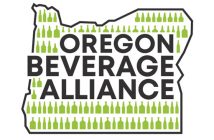Known as a rugged and conventional field, the oil and gas industry has still been at the forefront of many innovations in cartography, artificial intelligence, deepwater exploration, and robotics. Companies around the world are utilizing these technologies, and those who do not will fall behind the competition.
Let’s dive into the emerging technological trends seen in the oil and gas industry and how they help cut costs, streamline processes, free up employee time, and keep workers out of harm’s way.
Automation and Robotics
Automation and robotics in the oil and gas industry make it easier to complete tasks that once could only be achieved by specialists.
New technologies have also enabled employees to control machines like oil rigs from remote locations.
In the oil and gas industry, many dangerous tasks require workers to put their lives at risk. Robots and automation now take over these hazardous tasks. One way robots are helping keep employees safe is by taking over drill pipe connecting and disconnecting. These tasks are a necessary but dangerous process when drilling.
Another crucial and sometimes overlooked part of the oil and gas industry is the need to keep oil and fuel tanks clean. When petroleum is drilled and stored in industrial tanks, sludge begins to build up. At a certain point, it can cause equipment malfunctions and harm the end-product.
Traditionally, humans were sent into industrial tanks to clean and remove sludge, putting them in severe danger. Now, some robots replace workers during industrial tank cleaning.
Utilizing human employees to complete mundane and repetitive tasks gets costly and has a higher risk of error. When robots replace repetitive tasks, managers can achieve lower costs and higher levels of productivity.
Using automation and robotics will streamline these tasks while also improving safety at a plant. Robotics are used for drilling, surveying, inspecting, robotic tank cleaning, and much more.
Artificial Intelligence
Artificial intelligence helps during downstream, midstream, and upstream processes.
AI systems can learn how to do simple tasks and problem-solve over time. Using AI as a guiding point for managers saves them time and potential mistakes. Artificial intelligence offers predictive, definite, and cognitive analytics to make more informed decisions.
More specifically, AI programs help with mapping procedures. They can scan the earth to see where the best places to drill are.
AI can detect leaks, machinery malfunctions, or hazardous chemicals and gasses. These systems also operate devices and machinery, meaning companies are now relying on algorithms for both the operation and maintenance of their equipment.
Internet of Things (IoT)
The oil and gas industry depends on technology. As new devices and hardware are being developed, they will require strong network and internet connections to operate — which is where IoT comes into play.
IoT connects many devices on one network, enabling real-time analytics and communications.
IoT systems are used as sensors, detectors, and devices (like blowout-preventers) in the oil and gas field. Using IoT connections means increasing worker safety, optimizing processes, and lowering costs.
GPS trackers used in the oil and gas industry help field managers and employees track shipments accurately. Tracking inventory or machinery helps optimize supply chain routes, reducing late shipments and projects.
When a field manager is off-site, they still know what is going on at the site thanks to the internet of things. If a sensor detects a drill malfunction, the field manager will be alerted of the information simultaneously. These advantages help companies spot issues before they become more prominent, costly, and dangerous problems.
Big Data and Analytics
For oil and gas companies, collecting data and using analytics helps to improve products and processes, which allows them to provide customers with better service and predictions.
Similar to artificial intelligence, big data and analytics help field managers and company owners make more informed decisions. The collection of data and analytics includes in-depth information about industry trends, company costs and revenue, supplies, and profit.
Data collected is then leveraged to help improve operations and implement AI-operating tasks. When processes are streamlined, it results in lower costs at oil and gas companies.
What the Future Holds for Oil and Gas
Oil is one of the hottest and most critical materials in the world.
According to market research from IBISWorld, the total revenues for the oil and gas drilling sector came to approximately $2.1 trillion in 2021.
As a major player in the economy, the oil and gas industry cannot afford to be left behind because of technological advancements. While skilled labor and human reasoning can’t entirely be taken out of some processes, the oil and gas industry will benefit from technologies like AI, robotics, and more.




